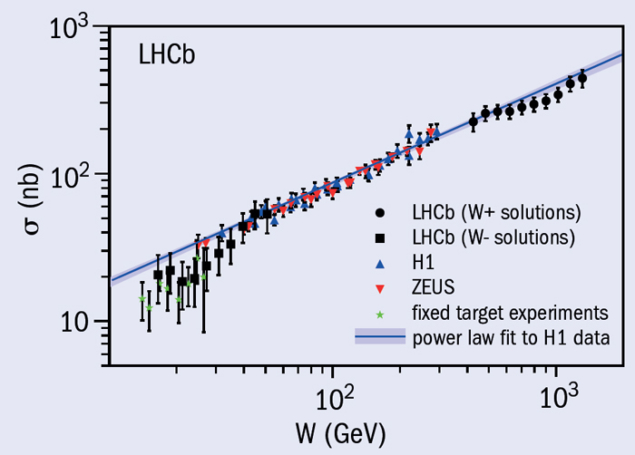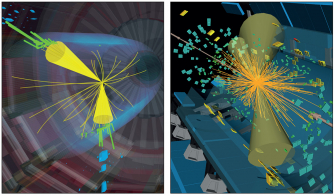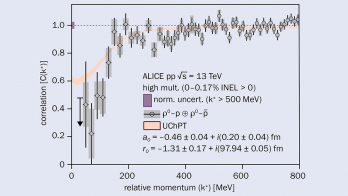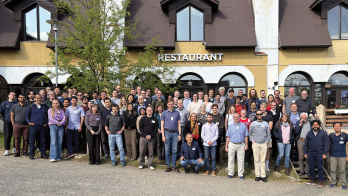The LHCb collaboration has released updated measurements of central exclusive production of the J/ψ and ψ(2S) mesons (LHCb collaboration 2014).
Central exclusive production is a class of reactions in which one or two particles are produced from a beam collision, but the colliding hadrons emerge intact. At the LHC this leads to an unusual and distinctive topology of low-multiplicity events contained in a small rapidity interval with large rapidity gaps on either side. J/ψ and ψ(2S) mesons are produced when a photon emitted from one proton interacts with a pomeron (a colourless combination of gluons) from the other. Measurements of the process can be used to test QCD predictions – to improve our understanding of the distribution of gluons inside the proton – and are also sensitive to saturation effects.

LHCb’s ability to trigger on low-momentum particles and the low number of proton–proton interactions per beam crossing provide an ideal environment to study these processes with particularly low multiplicity. Using data collected in 2011, around 56,000 central exclusive J/ψ and 1500 ψ(2S) mesons have been identified by reconstructing their decays to pairs of muons. While non-resonant backgrounds are very small, the challenge in the analysis is to estimate the larger background that arises when J/ψ and ψ(2S) mesons are produced and one or both of the colliding protons dissociate. As LHCb is instrumented in the forward region mainly, this effect often cannot be detected directly. Instead the collaboration has developed methods to estimate the background rate from the portion of events that are detected.
The measured cross-sections are compared to theoretical predictions, as well as to photoproduction measurements from the HERA electron–proton collider and from fixed-target experiments. Although these environments are quite different from collisions at the LHC, the underlying process is the same. In the former a photon is emitted from an incoming electron beam, while the latter use photon beams directly.
The figure shows a model-dependent comparison of the LHCb results with those from the other types of experiment. It plots the photoproduction cross-section as a function of the photon–proton centre-of-mass energy (W). There is a two-fold ambiguity in converting LHCb’s proton–proton differential cross-section to a photoproduction cross-section, corresponding to the photon being either an emitter or a target. This is resolved using recent results from the H1 experiment at HERA (H1 collaboration 2013). The data in the figure show broad consistency over two orders of magnitude, but are in marginal agreement with a single power-law distribution expected from leading-order QCD. Better agreement is provided either at next-to-leading order QCD (Jones et al. 2013) or by including saturation effects (Gay Ducati et al. 2013).
Further reading
M B Gay Ducati et al. 2013 arXiv:1305.4611 [hep.ph].
H1 collaboration 2013 Eur. Phys. J. C73 2466.
S P Jones et al. 2013 JHEP 1311 085.
LHCb collaboration 2014 arXiv:1401.3288 [hep-ex].








